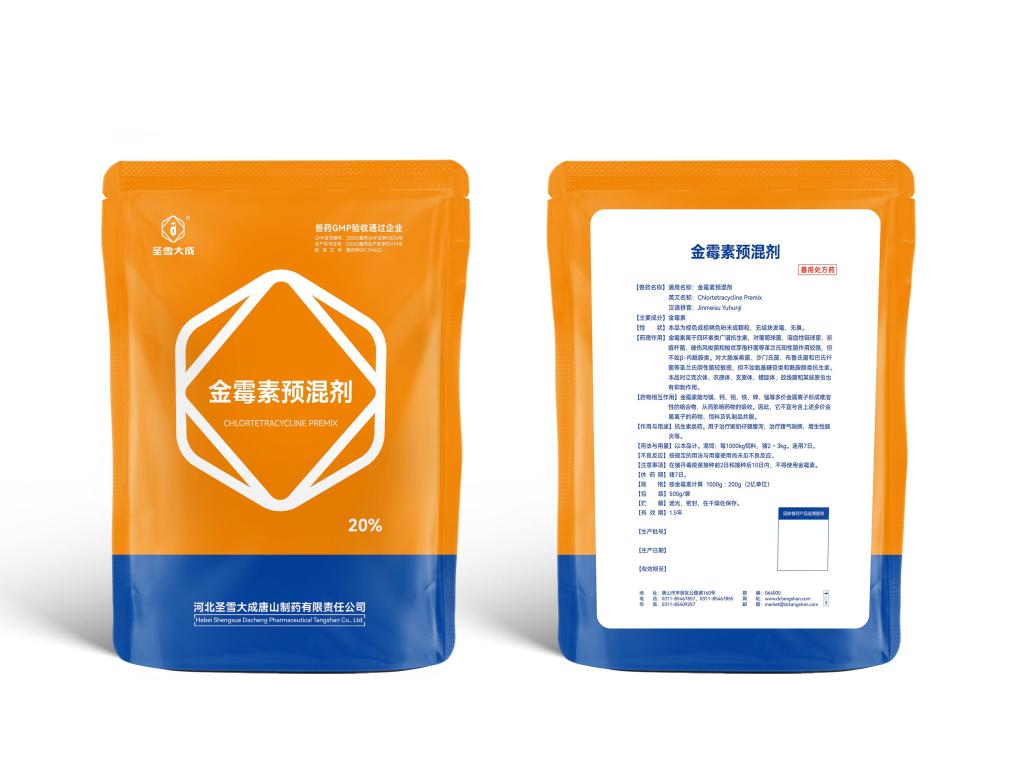Tel:0086 18231198596

News
Current Position:
Home >
News
>Addressing concerns about Chlortetracycline Premix residues in food products.
Addressing concerns about Chlortetracycline Premix residues in food products.
TIME:2024-05-30
Understanding Chlortetracycline Premix and Residues
CTC is a broad-spectrum antibiotic belonging to the tetracycline class, commonly used in animal feed for its antimicrobial properties. When administered to animals, CTC is metabolized and excreted, leading to the potential presence of residues in animal tissues, milk, and eggs. While CTC residues in food products are typically below established regulatory limits, concerns persist about the potential risks associated with long-term exposure to low levels of antibiotics through the food supply.
Health Risks Associated with CTC Residues
Exposure to CTC residues in food products has been associated with several potential health risks for consumers:
Antimicrobial Resistance: Prolonged exposure to low levels of antibiotics, such as CTC, in the food supply can contribute to the development of antimicrobial resistance in bacteria, potentially reducing the effectiveness of antibiotics in treating human infections.
Allergic Reactions: Some individuals may be allergic to tetracycline antibiotics, including CTC, and may experience adverse reactions upon consuming food products containing CTC residues.
Disruption of Gut Microbiota: Consumption of food products containing CTC residues may disrupt the balance of gut microbiota in humans, leading to gastrointestinal disturbances and potential long-term health effects.
Regulatory Compliance: Non-compliance with regulatory limits for CTC residues in food products may result in legal and economic consequences for producers and exporters, as well as erode consumer trust in the safety and quality of food products.
Mitigation Strategies for CTC Residues
Several strategies can be implemented to mitigate the risks associated with CTC residues in food products:
Withdrawal Periods: Implementing appropriate withdrawal periods between the cessation of CTC treatment in animals and the marketing of food products helps ensure that residues decline to acceptable levels below regulatory limits.
Monitoring and Surveillance: Regular monitoring and surveillance of CTC residues in food products, as well as in animal tissues and feed, are essential for detecting and addressing potential violations of regulatory limits and ensuring compliance with food safety standards.
Good Agricultural Practices (GAP): Adhering to good agricultural practices, including proper dosing, administration, and record-keeping of antibiotics, as well as adequate withdrawal periods, minimizes the risk of CTC residues in food products.
Alternative Treatment Options: Exploring alternative treatment options, such as vaccines, probiotics, and improved management practices, reduces the reliance on antibiotics like CTC for disease prevention and treatment in animal agriculture.
Education and Training: Providing education and training to livestock producers, veterinarians, and food handlers on the responsible use of antibiotics, as well as proper withdrawal periods and food safety practices, promotes stewardship and ensures compliance with regulations.
Regulation and Surveillance
Regulatory agencies play a crucial role in ensuring the safety and quality of food products by establishing and enforcing standards for antibiotic residues. In many countries, maximum residue limits (MRLs) are set for CTC and other antibiotics in food products, based on scientific assessments of their safety for human consumption. Regulatory authorities conduct routine inspections, sampling, and testing of food products to enforce compliance with MRLs and protect public health.
Conclusion
Addressing concerns about chlortetracycline (CTC) premix residues in food products requires a comprehensive approach that includes monitoring, surveillance, regulation, and mitigation strategies. By implementing withdrawal periods, monitoring and surveillance programs, good agricultural practices, alternative treatment options, and education and training initiatives, stakeholders can minimize the risks associated with CTC residues and ensure the safety and quality of food products for consumers. Regulatory authorities play a critical role in enforcing compliance with maximum residue limits and safeguarding public health. By working together, the livestock industry, regulatory agencies, and other stakeholders can address concerns about CTC residues and maintain consumer confidence in the safety and integrity of the food supply.

 CONTACT
CONTACT




